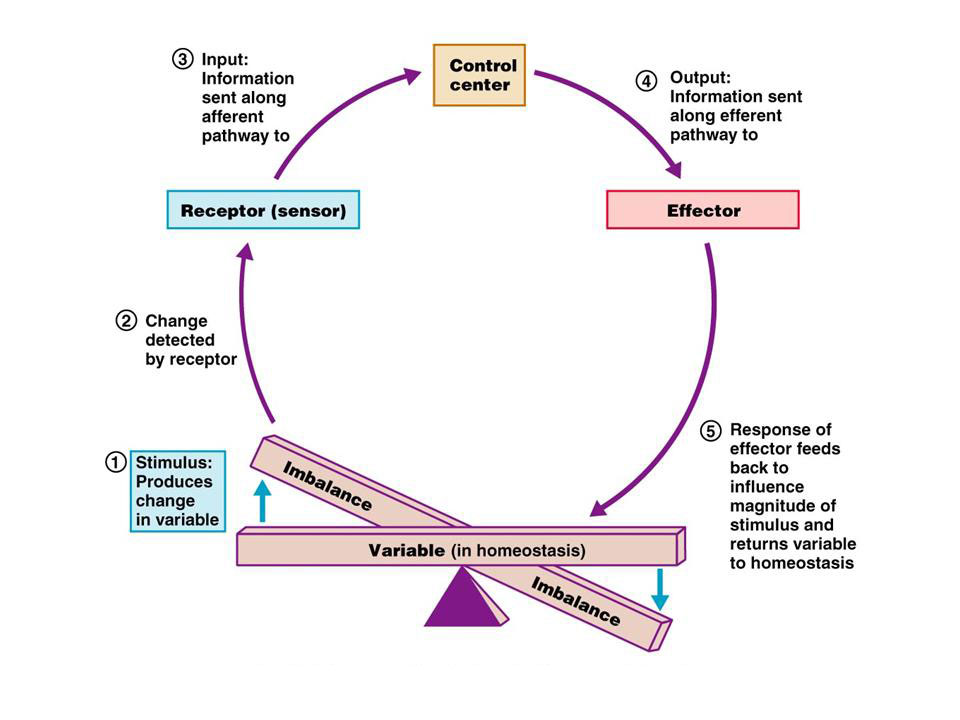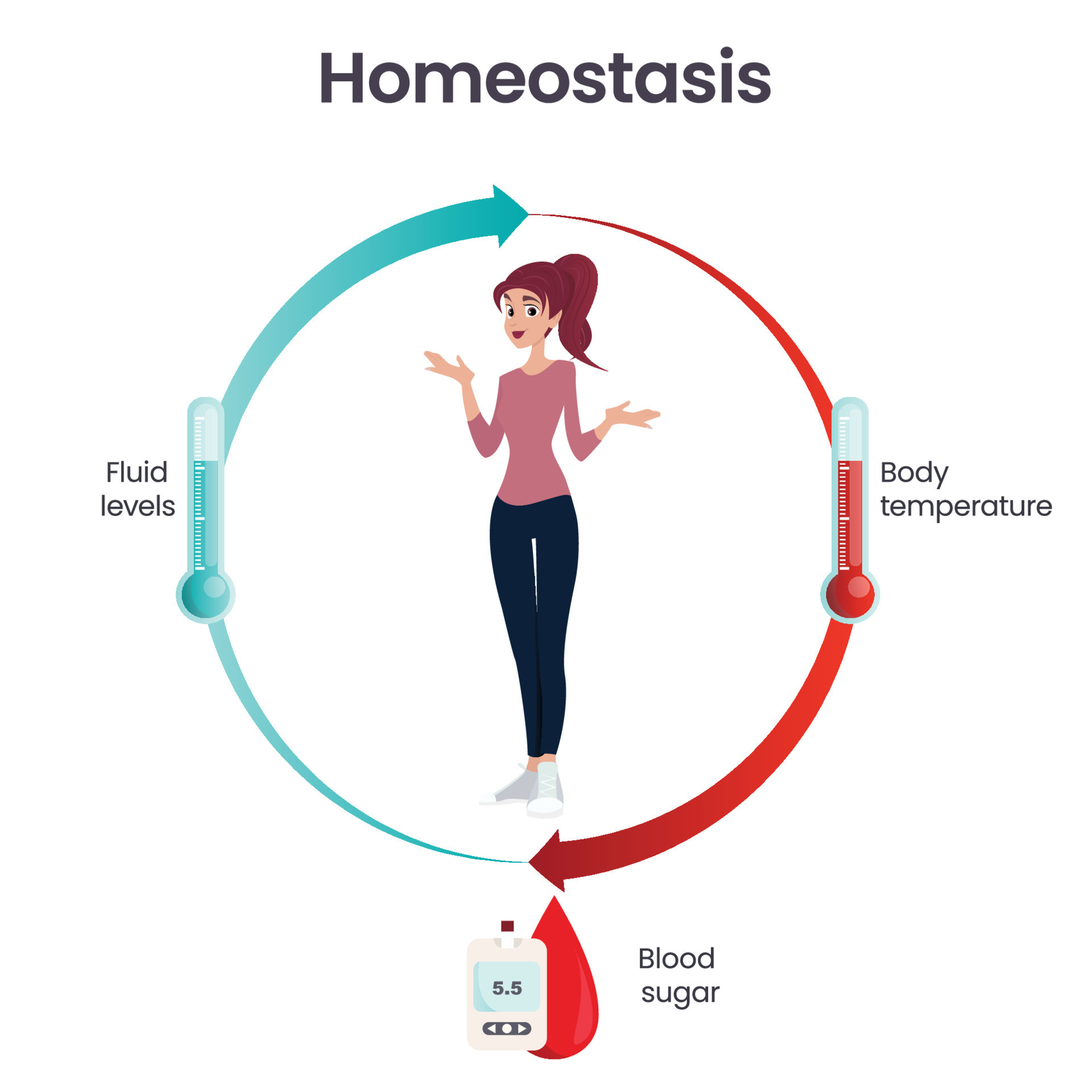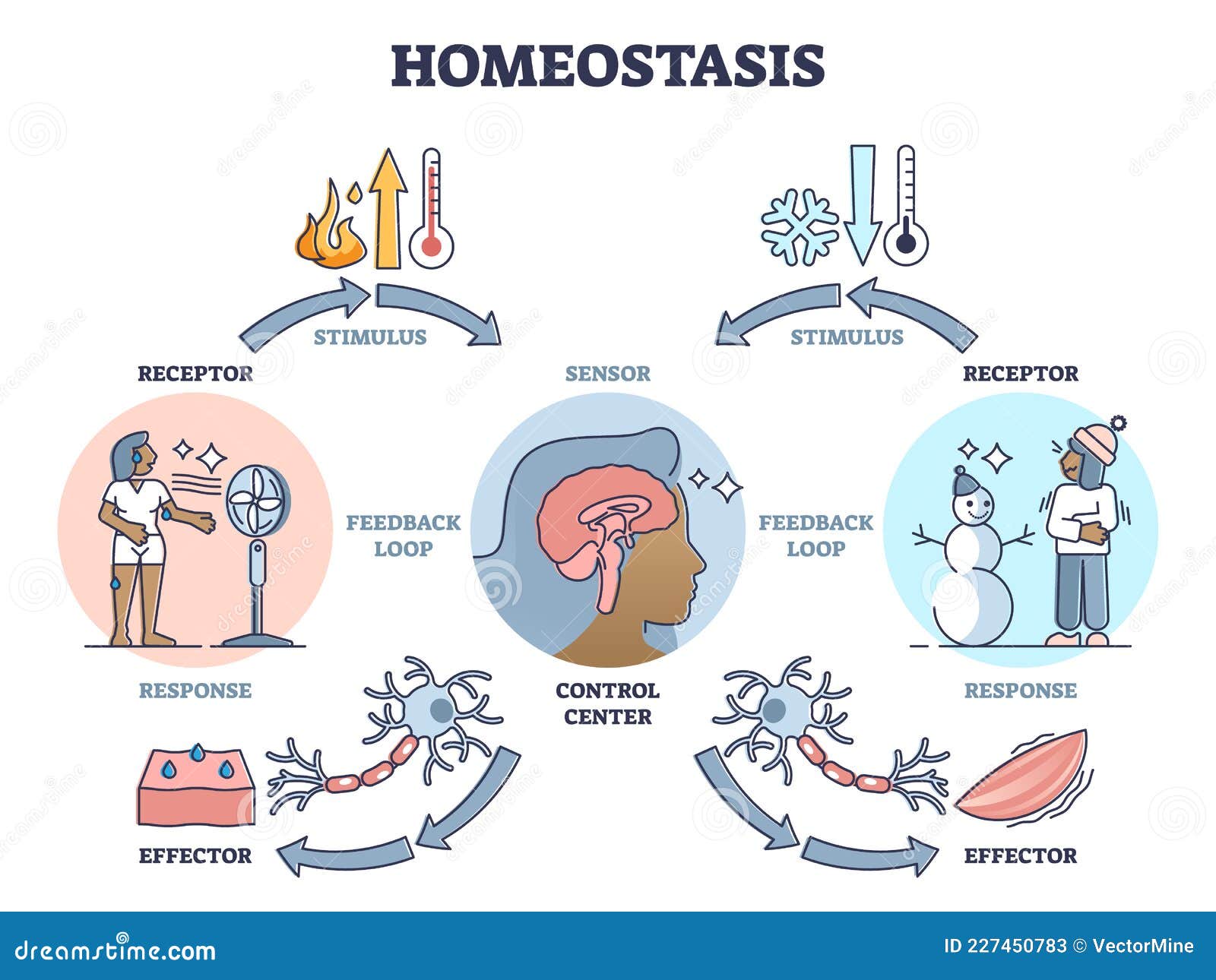Drawing Of Homeostasis
Drawing Of Homeostasis - Setpoint, variable, receptor (sensor), effector (target), and control (integrating) center. This process involves various biological mechanisms that detect changes, trigger responses, and restore balance. Web choose from drawing of the homeostasis stock illustrations from istock. The body maintains homeostasis for many factors. In animals such as ourselves, the internal environment of our bodies must have certain conditions within tolerable limits to continue the healthy functioning of us. Describe thermoregulation of endothermic and ectothermic animals. This section will review the terminology and explain the physiological mechanisms that are associated with homeostasis. Your body has set points for a variety of states—including temperature, weight, sleep, thirst,. If unsuccessful, disaster or death ensues. Exposure to extreme temperatures triggers physiological responses like shivering or sweating, ensuring a constant core temperature. If homeostasis is successful, life continues; Your body needs to maintain proper homeostasis. Describe thermoregulation of endothermic and ectothermic animals. The word homeostasis comes from the greek words homo, meaning “same” and stasis, meaning “steady”. From body temperature to blood pressure to levels of certain nutrients, each physiological condition has a particular set point. Homeostasis typically involves negative feedback loops that counteract changes of various properties from. Web homeostasis is the tendency to resist change in order to maintain a stable, relatively constant internal environment. Web homeostasis refers to an organism's ability to regulate various physiological processes to keep internal states steady and balanced. This section will review the terminology and explain the physiological mechanisms that are associated with homeostasis. Web homeostasis is an almost exclusively biological term, referring to the concepts described by bernard and cannon, concerning the constancy of the internal environment in which the cells of the body live and survive. Homeostasis typically involves negative feedback loops that counteract changes of various properties from. Web learn about homeostasis and how the body regulates temperature, blood pressure, blood ph and blood sugar. Identify and define the four interacting components that maintain homeostasis in feedback loops. Define the following terms as they relate to homeostasis: Web homeostasis is the activity of cells throughout. Web many medical conditions and diseases result from altered homeostasis. Web homeostasis refers to an organism's ability to regulate various physiological processes to keep internal states steady and balanced. Web maintaining homeostasis requires that the body continuously monitor its internal conditions. Some of these include body temperature, blood glucose, and various ph levels. The adjusting of systems within a cell. In animals such as ourselves, the internal environment of our bodies must have certain conditions within tolerable limits to continue the healthy functioning of us. These processes take place mostly without our conscious awareness. Web homeostasis is the ability of an organism to maintain a stable internal environment despite changes in external conditions. Define the following terms as they relate. Homeostasis also extends to regulating blood pressure and sugar levels. Exposure to extreme temperatures triggers physiological responses like shivering or sweating, ensuring a constant core temperature. Web maintaining homeostasis requires that the body continuously monitor its internal conditions. Web learn about homeostasis and how the body regulates temperature, blood pressure, blood ph and blood sugar. Identify and define the four. Web homeostasis is the activity of cells throughout the body to maintain the physiological state within a narrow range that is compatible with life. Describe the factors affecting homeostasis. This process involves various biological mechanisms that detect changes, trigger responses, and restore balance. Homeostasis is maintained at many levels, not just the level of the whole body as it. Web. Compare and contrast negative and positive feedback loops. Web homeostasis refers to an organism's ability to regulate various physiological processes to keep internal states steady and balanced. Web maintaining homeostasis requires that the body continuously monitor its internal conditions. If homeostasis is successful, life continues; Homeostasis is maintained at many levels, not just the level of the whole body as. Web homeostasis is the tendency to resist change in order to maintain a stable, relatively constant internal environment. Exposure to extreme temperatures triggers physiological responses like shivering or sweating, ensuring a constant core temperature. From body temperature to blood pressure to levels of certain nutrients, each physiological condition has a particular set point. Web homeostasis is an almost exclusively biological. Your body needs to maintain proper homeostasis. The adjusting of systems within a cell is called homeostatic regulation. Homeostasis is regulated by negative feedback loops and, much less frequently, by positive feedback loops. Web homeostasis is a physiological process that keeps the internal environment of a living organism stable and balanced. Exposure to extreme temperatures triggers physiological responses like shivering. Web choose from drawing of the homeostasis stock illustrations from istock. The word homeostasis derives from greek, with home meaning “similar,” and stasis, meaning “stable.” when used as an adjective, it. If homeostasis is successful, life continues; Describe the factors affecting homeostasis. Web maintaining homeostasis requires that the body continuously monitor its internal conditions. Web homeostasis sees to it that body temperature and water levels are kept within the tolerable limits at all times. Homeostasis typically involves negative feedback loops that counteract changes of various properties from. Web maintaining homeostasis requires that the body continuously monitor its internal conditions. Exposure to extreme temperatures triggers physiological responses like shivering or sweating, ensuring a constant core. Your body needs to maintain proper homeostasis. The receptor receives information on the changing environment, and the control centre processes the information received by the receptor. Web homeostasis is the ability of an organism to maintain a stable internal environment despite changes in external conditions. Define the following terms as they relate to homeostasis: The word homeostasis derives from greek, with home meaning “similar,” and stasis, meaning “stable.” when used as an adjective, it. In animals such as ourselves, the internal environment of our bodies must have certain conditions within tolerable limits to continue the healthy functioning of us. Your body has set points for a variety of states—including temperature, weight, sleep, thirst,. Web many medical conditions and diseases result from altered homeostasis. Compare and contrast negative and positive feedback loops. Exposure to extreme temperatures triggers physiological responses like shivering or sweating, ensuring a constant core temperature. Web homeostasis is an important characteristic of living things. Some of these include body temperature, blood glucose, and various ph levels. If homeostasis is successful, life continues; Explain how negative feedback controls body temperature. This section will review the terminology and explain the physiological mechanisms that are associated with homeostasis. Identify and define the four interacting components that maintain homeostasis in feedback loops.Homeostasis Definition, Importance & Examples Lesson
Physiological Homeostasis Biology Online Tutorial
What Is Homeostasis? » ScienceABC
[Life Process Class 10] Why is Homeostasis important? Biology
Homeostasis
EASY PHYSIOLOGY HOW THE BODY WORK
Homeostasis positive/ negative feedback mechanisms Anatomy & Physiology
Maintaining homeostasis and listening to your body
Biology homeostasis science vector illustration infographic 20561283
Homeostasis As Biological State with Temperature Regulation Outline
The Body Maintains Homeostasis For Many Factors.
From Body Temperature To Blood Pressure To Levels Of Certain Nutrients, Each Physiological Condition Has A Particular Set Point.
Keeping A Stable Internal Environment Requires Constant Adjustments As Conditions Change Inside And Outside The Cell.
Web Learn About Homeostasis And How The Body Regulates Temperature, Blood Pressure, Blood Ph And Blood Sugar.
Related Post:

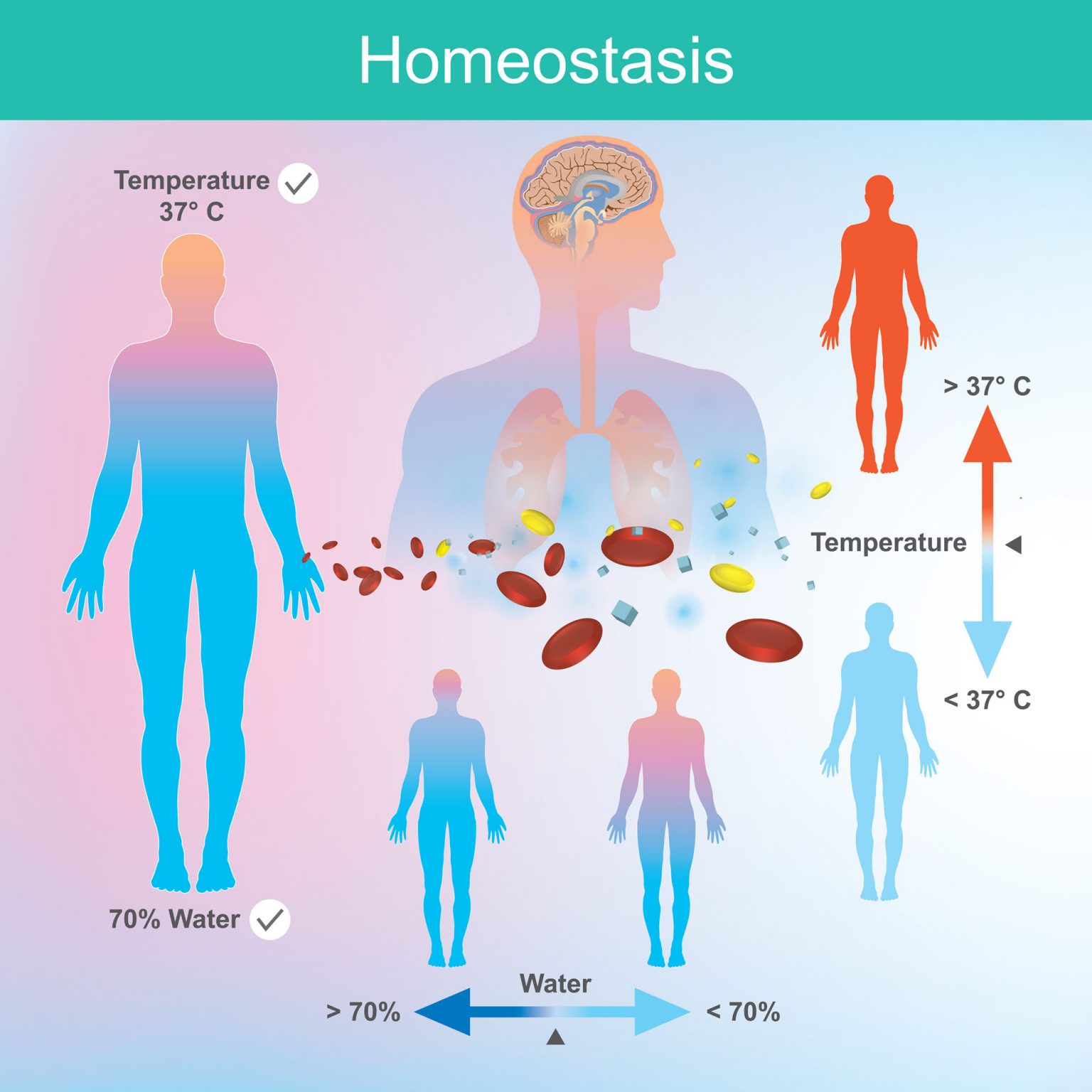
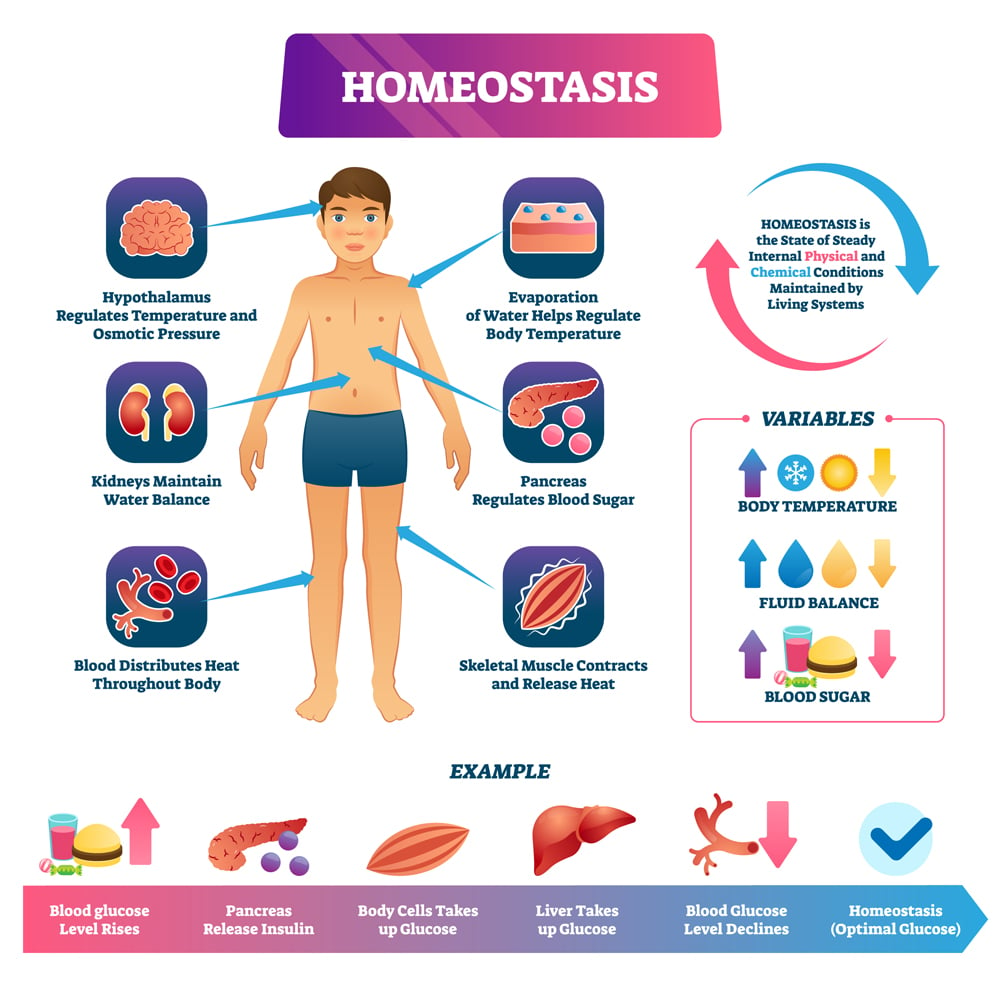
![[Life Process Class 10] Why is Homeostasis important? Biology](https://d77da31580fbc8944c00-52b01ccbcfe56047120eec75d9cb2cbd.ssl.cf6.rackcdn.com/e8414069-a51e-419b-a17c-de6cb8aeabb1/homeostasis----teachoo.jpg)


